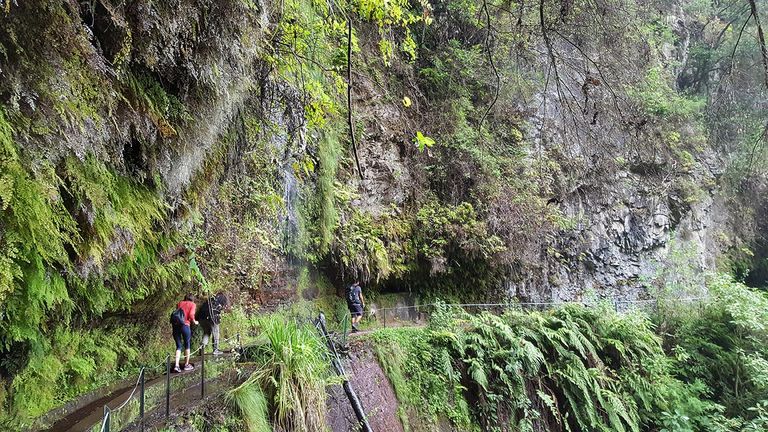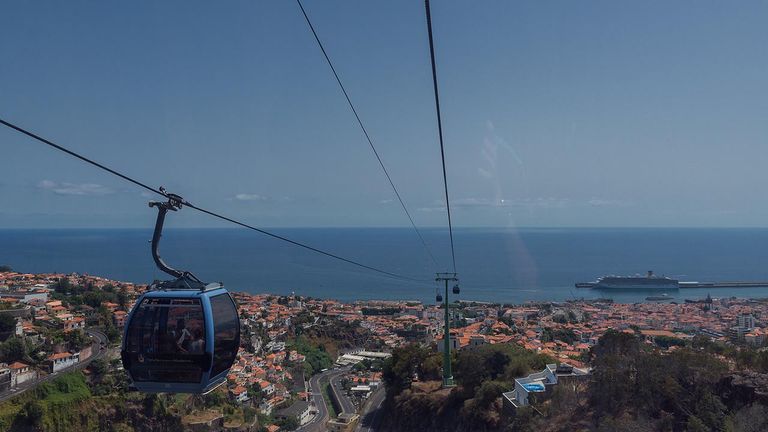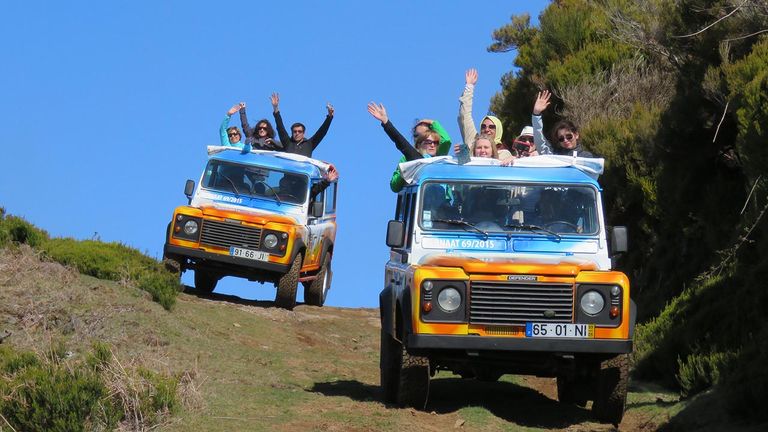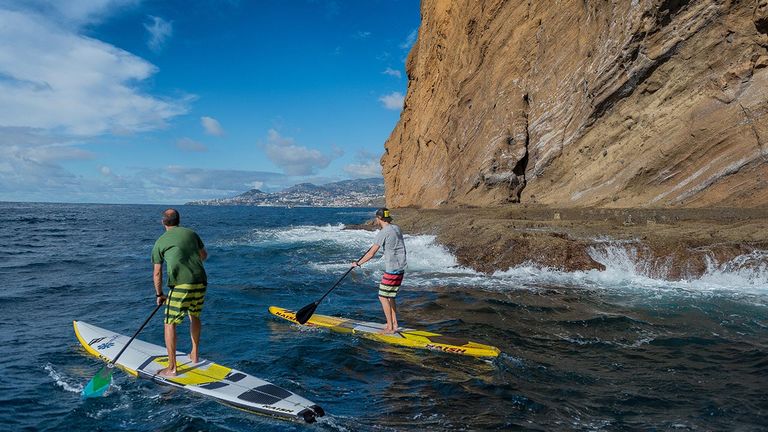Without any prior research, first-time travelers to Madeira, a Portuguese island located 310 miles off the coast of Africa, might expect sunbathers relaxing on white-sand beaches. But they would then be surprised by an exotic archipelago with volcanic cliffs that rise steeply from the sea, and rich flora and fauna — as well as proud Madeirans who wouldn't live anywhere else.
Currently celebrating the 600th anniversary of its discovery in 1419, the time to explore Madeira is now.
Hike Ancient Levadas
Hiking the ancient levadas, irrigation channels that were dug to bring rainwater to Madeira’s low-lying farmland, is a top outdoor activity on the island. Every year, tens of thousands put on their walking shoes to discover the diverse topography.
 The open canal system is unique to Madeira.
The open canal system is unique to Madeira.
Credit: 2020 Wibke Carter
There are several hundred miles of trails, and many of them take hikers deep into the UNESCO World Heritage Site of the Laurissilva Forest, which is said to be about 20 million years old.
www.madeira-adventure-kingdom.com
Ride the Funchal Cable Car
The best views of capital city Funchal — which encompass the blue sea, the city outskirts and surrounding mountains — happen during the 20-minute cable car ride from the Old Town to Monte station.
 The Funchal Cable Car climbs up to 1,837 feet.
The Funchal Cable Car climbs up to 1,837 feet.
Credit: 2020 Visit Madeira
At the 1,837-foot peak, most visitors frequent the magnificent Monte Palace Tropical Garden and the Church of Our Lady, where the last Austrian-Hungarian Emperor Charles I lies in his tomb.
www.madeiracablecar.com
Return to Funchal by Toboggan Sled
What goes up must come down — so why not make the process fun by riding a wicker toboggan sled?
 Travel back down to Funchal by toboggan sled.
Travel back down to Funchal by toboggan sled.
Credit: 2020 Miguel Moniz
Guided by two men, or carreiros, who use their rubber-soled boots as brakes, this alternative mode of transport dates to the early 19th century when it was the preferred way for local residents to travel downhill quickly from Monte to Funchal. The staggeringly steep 1 mile descent at up to 23 mph is an adrenaline-filled ride like no other.
www.carreirosdomonte.com
Take a Jeep Tour
Exploring by four-wheel drive is a great way to get to know Madeira, especially because the volcanic terrain that’s set between cliffs and forest-covered mountains can be difficult to access. The tours are usually a half- or full day, and many itineraries stop in Santana, a small village with traditional, thatched triangular houses.
 Four-wheel drive vehicles enable clients to traverse Madeira’s rugged terrain.
Four-wheel drive vehicles enable clients to traverse Madeira’s rugged terrain.
Credit: 2020 Visit Madeira
Other popular options include visiting the fishing village of Camara de Lobos; taking a trip to Paul da Serra, the island’s biggest plateau; or walking in the cave systems of Sao Vicente.
For a truly unforgettable experience, look for an itinerary that includes watching the sunrise over the ocean from Pico do Arieiro, Madeira’s third-highest peak at 5,965 feet.
www.discoveryisland-madeira.com
Play a Wide Range of Watersports
Sea lovers will benefit from the warm sea currents, with year-round temperatures ranging between 66 degrees and 75 degrees Fahrenheit — ideal for snorkeling, diving, sailing, stand-up paddleboarding, windsurfing and sportfishing.
 Madeira offers a wealth of watersports, including stand-up paddleboarding.
Madeira offers a wealth of watersports, including stand-up paddleboarding.
Credit: 2020 Visit MadeiraThe incredible waves of Madeira have earned it the nickname “Hawaii of the Atlantic,” and some of Europe’s best surfing spots are found at the Jardim do Mar, Faja da Areia and Porto da Cruz beaches.
Go Whale and Dolphin Watching
Marine mammals can be seen frequently in the archipelago of Madeira. In this corner of the Atlantic, 28 species of dolphins and whales, including bottlenose dolphins, sperm whales and pilot whales, live in or visit the waters off Madeira’s coast. Turtles are also a common sight, and a daytrip to Desertas Islands may allow for an encounter with one of the world’s rarest seals: the Mediterranean monk seal.
How to Get There
Madeira is easily accessible via Lisbon. National carrier TAP Air Portugal opened San Francisco as a gateway in 2019, and it will soon offer 71 departures weekly across the U.S. in 2020.
www.flytap.com
The Details
Madeira Regional Tourism Board
www.visitmadeira.pt